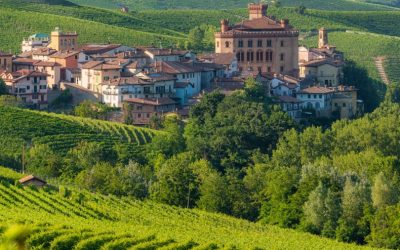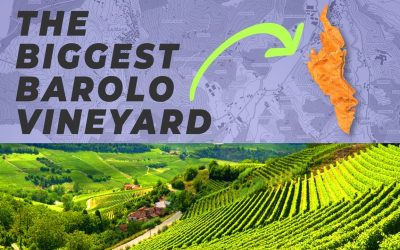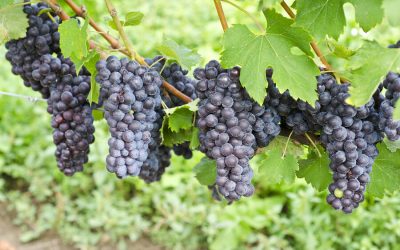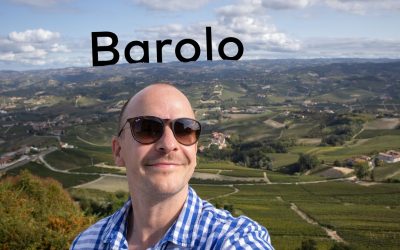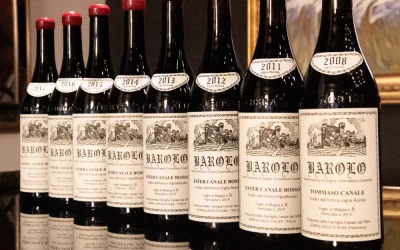Exploring the Barolo Wine Region: An In-Depth Guide
Known as the “King of Wines and Wine of Kings”, Barolo is one of the world’s most prestigious wine regions. Located in Italy’s northwestern Piedmont region, Barolo’s cool, foggy climate and unique soil composition make it the ideal location for producing Nebbiolo, a grape known for its robust tannins, high acidity, and complex aromas. Let’s dive into an in-depth exploration of the Barolo wine region, unraveling its rich history, vineyard practices, and the renowned Crus.
Exploring the Barolo Wine Region: An In-Depth Guide
| Key Aspect | Details |
|---|---|
| Location | Piedmont, Italy |
| Grape Variety | Nebbiolo |
| Climate | Continental |
| Soil | Tortonian (blue marl) and Serravallian (sandstone) |
| Wine Style | Full-bodied, high tannin and acidity, pronounced aromas and flavors |
| Aging Potential | Excellent; 10-30+ years |
| Food Pairings | Rich meat dishes, truffle-infused dishes, aged hard cheeses |
| Key Producers | Poderi Aldo Conterno, Bruno Giacosa, Bartolo Mascarello, Giacomo Conterno |
| Iconic Bottlings | Monfortino, Cannubi, Rocche dell’Annunziata |
| Investment Potential | High, especially for top vintages and renowned producers |
When you hear Barolo, what comes to mind is a world-class wine region situated in the Piedmont area of northern Italy. It is most renowned for producing full-bodied, robust wines primarily using the Nebbiolo grape. Barolo’s unique geography, distinct soil composition, and winemaking techniques contribute to the exceptional character of its wines.
History of the Barolo Wine Region:

The history of Barolo, often referred to as the ‘King of Wines and the Wine of Kings,’ is as rich and complex as the wine itself. The Barolo wine region, located in the Piedmont region of northwest Italy, is known for its Nebbiolo grapes, which have been grown in the area since at least the 14th century. However, the wine we know today as Barolo didn’t come into existence until the 19th century. Prior to that, the Nebbiolo grapes were used to make sweet wines, not the dry, full-bodied wines that are synonymous with Barolo today.
The transformation of Barolo into a dry wine is often attributed to a French oenologist, Louis Oudart, and the Marchesa (Marchioness) of Barolo, Juliette Colbert. In the mid-19th century, the Marchesa hired Oudart to improve the quality of her estate’s wines. Applying modern French winemaking techniques, Oudart was able to ferment the grape must completely, resulting in a dry wine. This style of winemaking gradually spread throughout the region, and the Barolo as we know it began to take shape.
The late 20th century saw a division in the winemaking process, resulting in the ‘Barolo wars.’ Some producers, the ‘Modernists,’ began using new techniques such as shorter fermentation periods and aging in small French oak barrels. These methods produced wines that were softer and fruitier, with less tannin, and that could be consumed at a younger age. On the other side were the ‘Traditionalists,’ who maintained long fermentation times and aged their wines in large Slavonian oak barrels, resulting in wines with high tannin levels and the ability to age and evolve over many years.
Today, both styles coexist in the Barolo region, offering a fantastic diversity of wines for lovers of this iconic Italian red wine. The region, now a UNESCO World Heritage site, continues to be renowned for its premium wines, reflecting the unique terroir and centuries-old winemaking tradition.
RENATO RATTI – THE INNOVATOR OF BAROLO
| Category | Details |
|---|---|
| Location | Piedmont, Italy |
| Grape Variety | Nebbiolo |
| Climate | Continental, cool, and foggy |
| Soil | Primarily clay, silt, and sand |
| Wine Style | High tannins, high acidity, complex aromas |
| Key Crus | Cannubi, Rocche di Castiglione, Lazzarito, Cerequio |
| Aging Requirement | Minimum 38 months, 18 in wood |
| Serving Temperature | 60-65°F (16-18°C) |

Geography and Climate of Barolo:
Barolo is located in the Piedmont region of northwest Italy, within the larger Langhe hills area. The region’s climate is continental, with hot summers and cold winters. The hilly landscape helps protect the vineyards from harsh weather, and the temperature differences between day and night aid in the development of the grapes’ aromas and flavors.
Barolo’s Unique Soil Composition:
Barolo’s soil is primarily composed of calcareous-clay sediments, which contribute to the high acidity and tannin levels in the wines. The region is divided into two main soil types: Tortonian in the west, which produces softer, fruitier wines, and Serravallian in the east, which yields more tannic, full-bodied wines.
The Nebbiolo Grape: The Heart of Barolo
Nebbiolo is the only grape variety permitted in Barolo wine. It is a late-ripening grape with high acidity and tannin levels, which contribute to the wine’s structure and longevity. The grape’s name is believed to derive from the Italian word ‘nebbia’, meaning fog, which often envelops the vineyards during the harvest season.
Viticulture in Barolo:
Viticulture in Barolo involves strict regulations to ensure the quality of the wines. The maximum yield is limited, and the wines must be made entirely from Nebbiolo. The vines are traditionally grown on steep slopes to maximize sunlight exposure and ensure optimal ripening.
The Wine Production Process in Barolo:
After harvesting, the Nebbiolo grapes undergo fermentation in stainless steel or concrete tanks. The wine is then aged for at least 38 months, with a minimum of 18 months in oak. Riserva wines require an extended aging period of at least 62 months.
- Understanding Barolo’s Labeling Laws: Barolo wines can be labeled with the name of the specific vineyard or ‘cru’ from which the grapes were sourced, indicating a higher quality tier. Additionally, ‘Riserva’ on the label indicates that the wine has undergone extended aging.
- The Importance of Aging in Barolo Wines: Due to their high tannin levels, Barolo wines benefit greatly from aging. This allows the tannins to soften and the complex flavors to develop, producing a more harmonious and enjoyable wine.
- Barolo’s Iconic Wine Style: Barolo is renowned for its powerful, full-bodied style, characterized by high tannin levels and high acidity. These wines typically exhibit flavors of cherries, tar, roses, and truffles, with more mature examples developing tertiary notes of leather, tobacco, and dried fruit.
- Modernist vs. Traditionalist Winemaking in Barolo: This refers to the different philosophies and techniques used in the region. Traditionalists favor longer maceration times and aging in large, old oak casks, while Modernists prefer shorter maceration, temperature-controlled fermentation, and aging in small French oak barrels. This results in stylistic differences in the wines, with Traditionalist wines being more tannic and structured, and Modernist wines being more approachable in their youth.
What distinguishes Barolo wines from other wines?
Barolo wines, often referred to as the “King of Wines,” are distinctive for their profound complexity, full-bodied character, and exceptional aging potential. They’re made from the Nebbiolo grape, grown in the unique terroir of the Barolo region in Piedmont, Italy. These wines are characterized by their deep garnet color, intense aromas of roses, cherries, truffles, and anise, and high levels of tannin and acidity.
Why is Nebbiolo the preferred grape in Barolo?
Nebbiolo, the grape behind the famous Barolo wines, is cherished for its complex aromas, full-bodied structure, and excellent aging potential. It has an extraordinary capacity to reflect the terroir where it’s grown. In the microclimates of Barolo, Nebbiolo expresses itself with distinct notes of tar, roses, cherries, and truffles, along with high tannins and acidity that allow the wines to evolve and mature beautifully over time.
How do the climatic conditions of Barolo influence its wines?
Barolo’s climate plays a crucial role in shaping its wines. Located in the Piedmont region of northwest Italy, it experiences a continental climate with significant temperature variations between day and night. This promotes the development of rich aromas and flavors in the grapes. The region’s long, warm summers allow late-ripening Nebbiolo to develop full phenolic maturity, while the cold winters help maintain the grape’s natural acidity, contributing to the wine’s structure and longevity.
What does a typical Barolo wine taste like?
A typical Barolo wine is full-bodied and complex, characterized by high levels of tannin and acidity. It offers deep flavors of cherries, roses, tar, and truffles, often with notes of dried herbs, leather, anise, and spices. While Barolo wines can be quite intense in their youth, they mellow with age, with the tannins softening to reveal an elegant and multi-layered wine.
How should I store and serve Barolo wines?
Barolo wines are best stored at a constant temperature of about 55°F (13°C), away from light and vibrations. They should be stored on their side to keep the cork moist. Before serving, Barolo wines, particularly older vintages, benefit from decanting to allow the wine to breathe and fully express its complex aromas and flavors. The optimal serving temperature for Barolo is between 60°F – 64°F (16°C – 18°C).
What are the differences between Modernist and Traditionalist winemaking in Barolo?
The distinction between Modernist and Traditionalist winemaking in Barolo primarily comes down to the methods used in fermentation and aging. Traditionalists tend to use longer maceration times (the period during which the grape juice is in contact with the skins and seeds), ferment in large old oak or concrete vessels, and age the wine for extended periods in large Slavonian oak casks. This often results in highly tannic wines that require many years to reach their peak. On the other hand, Modernists lean towards shorter maceration times, temperature-controlled fermentation, and aging in small French oak barrels, which imparts stronger oak flavors and softens the tannins, making the wines more approachable at a younger age.
What is a Barolo Cru?
A “cru” in Barolo refers to a specific vineyard or hillside, each with its unique soil composition and microclimate that imparts distinct characteristics to the wine. There are currently 181 officially recognized crus in the Barolo region, each offering a unique expression of Nebbiolo. Some of the most renowned crus include Cannubi, Cerequio, and Rocche dell’Annunziata.
What are the ideal food pairings for Barolo?
The high tannin and acidity of Barolo wines make them particularly suited to pairing with rich, hearty dishes. Traditional Piedmontese cuisine, such as truffle-infused risottos, braised beef, or game dishes, complement Barolo’s robust structure and complex flavors. Aged hard cheeses like Parmigiano-Reggiano or Pecorino also work well.
How does vintage variation impact Barolo?
Given Barolo’s cool continental climate, weather conditions can vary significantly from year to year, leading to substantial vintage variation. Factors like temperature, rainfall, and sunshine hours during the growing season can dramatically affect the ripening process and, consequently, the characteristics of the final wine. As a result, some vintages may be considered more successful and sought-after than others.  .
.
Why is Barolo considered a good investment?
Barolo, often referred to as “the King of Wines and the Wine of Kings,” has long been recognized for its exceptional quality and aging potential. Top vintages from renowned producers can appreciate significantly in value over time, especially as the wine matures and becomes rarer. Furthermore, the rising global reputation of Italian wines and increasing demand from emerging markets make Barolo a compelling prospect for wine investors.

FAQs:
- What makes Barolo wines unique? Barolo wines are unique due to their terroir, the Nebbiolo grape, and the wine production methods. The combination of soil, climate, and altitude in the Barolo region creates a unique environment for Nebbiolo to grow, producing wines with powerful structure, high tannins, and acidity. The extensive aging process, both in oak and in the bottle, also contributes to Barolo’s distinct profile of intense, complex flavors.
- How long should Barolo wine age before drinking? Traditional Barolo wines require substantial aging before they are approachable due to their high tannin levels. It’s recommended that these wines age for at least 10-15 years, though top vintages from great producers can age well beyond that. Modern-style Barolo wines, which are often made to be more accessible in their youth, can be enjoyed after 5-8 years.
- What are some of the most renowned Crus in Barolo? Some of the most renowned Crus in Barolo include Cannubi, Rocche di Castiglione, Brunate, Cerequio, and Sarmassa. These vineyards are known for producing high-quality grapes that result in exceptional wines with great complexity and aging potential.
- How does Barolo compare to other Italian wines like Chianti or Amarone? Barolo, made from Nebbiolo, is often more tannic and robust compared to Chianti, which is primarily made from Sangiovese. Barolo typically exhibits notes of tar, roses, and cherries with high acidity. On the other hand, Amarone, a rich and powerful wine made from dried Corvina grapes in Veneto, differs in its production process (appassimento) and flavor profile, characterized by dried fruit, tobacco, and spice notes.
- What is the difference between Barolo and Barbaresco? Both Barolo and Barbaresco are made from Nebbiolo and hail from the Piedmont region, but they do differ. Barolo tends to be more robust, with high tannins and acidity, and requires a minimum aging of 38 months (18 in wood). Barbaresco is often more elegant, lighter in style with softer tannins and requires less aging time: 26 months (9 in wood).
- How should Barolo wines be stored? Barolo wines should be stored in a cool, dark place, ideally in a wine cellar with a stable temperature of about 13°C (55°F) and relative humidity of 70%. The wines should be stored horizontally to keep the cork moist and ensure a tight seal.
- What foods pair best with Barolo? Given Barolo’s high tannin and acidity, it pairs well with rich, fatty, and umami-rich foods that can balance out its intensity. Traditional pairings include truffle dishes, braised beef, game meats, risotto, and aged cheeses.
- What should I look for when buying a bottle of Barolo? When buying Barolo, consider the producer, the vintage, and the specific vineyard or Cru if noted. Look for reputable producers and well-regarded vintages. Older bottles should have been well-stored, as Barolo’s aging potential is one of its greatest attributes.
- Can I visit vineyards in the Barolo region? Yes, many vineyards and wineries in the Barolo region are open to visitors. It’s a fantastic way to learn about the wine production process, meet the producers, and sample a variety of wines. It’s recommended to book appointments in advance.
- How will climate change impact the Barolo region? Climate change presents significant challenges for the Barolo region. Rising temperatures can lead to earlier ripening, which may disrupt the balance of sugar, acid, and tannins in the grapes. More frequent extreme weather events, like hailstorms and droughts, can also impact harvests. Winemakers are exploring various adaptations, from experimenting with new vineyard management techniques to diversifying grape varieties.
Conclusion: The Barolo wine region, with its meticulous viticulture and detailed vinification, captures the essence of the Nebbiolo grape, producing wines of great complexity, longevity, and elegance. These factors, along with its storied history and unique terroir, make Barolo a fascinating region for any wine lover.
Conclusion
In the world of wine, Barolo remains a jewel of Italy—a region that offers not only rich, complex, and luxurious wines but also a profound exploration into centuries of winemaking tradition. As we have journeyed through the various facets of Barolo—from the terroir and the Nebbiolo grape to the winemaking techniques and the impact of vintages—it is clear that the real beauty of Barolo lies in its ability to offer a symphony of flavors and aromas that capture the essence of its unique landscape. As you sip a glass of Barolo, you are not just tasting a wine—you are immersing yourself in a region and its rich history, and that’s the true magic of Barolo.
